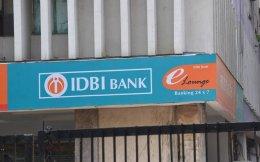The Indian rupee's relative stability is changing hedging behaviour among businesses in the country, spurring them into using creative options structures in place of conventional tools.
Companies are using options-structures such as seagulls and range-forwards, bankers say, rather than simply using a forward contract to lock in a rate for future foreign payments and receipts.
Exporters say forward sales of their dollar receipts for rupees are not lucrative in the current environment, and dabbling in derivatives enhances returns.
Pankaj Kumar, general manager forex at Merino Industries, a small firm with an annual foreign exchange exposure of $130 million to $140 million, has turned to an option structure called the range-forward which will allow him to sell his dollars in a year's time at a rate in the range of 83.50 to 85.60 rupees.
Kumar was driven to the structure by the depressed forward premiums on the rupee. A simple forward contract would lock him into a one-year rate of 84.60. He likes the upside potential in a range-forward, alongside the safety of a hedge in case the rupee appreciates.
"Used judiciously, options can offer superior results when compared to other hedging instruments," says Samir Lodha, managing director of FX advisory firm QuantArt Market Solutions, that advises about 100 mid-and-large sized corporates.
For an efficient hedge, "one needs to have strategies and instruments and dynamism which reduce both risk and cost," Lodha said.
Bankers say they are now dealing more in currency options than before. A senior currency sales executive at a large private sector bank says options volumes through October and November are about 40% higher than they were in July.
Seagulls and more exotic structures like knock-ins and knock-outs done by importers have been the main drivers of the increase in volumes, he said.
Importers seem driven by rupee's low volatility, which makes them reluctant to pay the forward premium to buy dollars.
Steady as she goes
The rupee's volatility has been suppressed by the Reserve Bank of India's heavy hand in supporting markets, even as other emerging market currencies have had to contend with an aggressively hawkish Federal Reserve and surging dollar.
The rupee's six-month annualised realised volatility is down to 2.5%, the lowest in nearly 20 years. And, the premium to buy or sell dollars in the forward market has collapsed. The six-month premium has steadily fallen from above 5% in mid-2022 to 1.5% this week.
Thanks to the low volatility and depressed forward premiums, a third of the hedging portfolio of companies at his bank now comprises options, the currency sales executive at the private bank said, a doubling of levels seen when premiums were higher and exporters could get attractive forward rates.
A widely used option structure is a three-legged, zero cost strategy called the seagull, which allows an importer or exporter to lock in one rate while allowing the firm to exploit an upward or downward move.
"A seagull allows you to take a calculated risk, based on your view on the range of the rupee during the tenure of the option," said Alok Agarwal, chief financial officer at Shyam Ferro Alloys, which has an annual currency exposure of about $350-400 million.
"You can achieve a rate that is better than the forward rate, and the option strikes can be adjusted to reflect the risk you are willing to take for that."






